- How to Propagate Monstera Guide: The Three Ways to Succeed - September 17, 2021
- Escargot Begonia: Why Is The Rex Begonia So Rare? - August 31, 2021
- Rieger Begonia: When You Can Expect The Hiemalis Begonia To Flourish - August 31, 2021
In the world of houseplants, Calathea varieties flourish near the top best for decorative style. Unfortunately, they are also near the top of the list of difficult plants. But their difficult attributes may be more rumor than the truth because once their quirks and requirements are discovered and learned, they are actually rather easygoing.
If you are interested in becoming a plant parent or adding to your growing brood of beautiful plants, consider getting a Calathea Peacock. Not only is this Calathea variety going to help you grow your garden and sharpen your gardening skills, but it is also going to look stunningly beautiful all the while.
So, let’s get busy talking about those ‘rumored’ difficulties surrounding these plants so you can be prepared for your newest addition.
How to Identify Calathea Peacock

This Calathea variety is not difficult to identify. Its features are striking and quite unique. These are the key identifiers of a Calathea Peacock plant:
- Leaves that are large and oval or oblong shaped
- Leaves that look as though their tops are painted feathers
- Leaves that have variegated stripes of green and cream on their tops
- Leaves that have variegated stripes of purple-red and cream on their bottoms
- Leaves that are glossy
How to Grow Calathea Peacock from Seed
Growing any variety of Calathea plants from seed is possible but not recommended. This is because it takes a long time to work through this process and to see any significant results. But, if this is the method you have chosen to establish your Calathea garden, then follow these steps:
- Purchase seeds from a reputable seller (sellers who price their seeds between $1 and $2)
- Either create a mixture of soil and peat mixed with coarse sand (the ratio should be 1:1 soil to peat/sand mixture) or purchase a seed starting mix
- Fill a plant container with the soil mix you have opted to use
- Place the seeds half an inch into the soil
- Lightly water the soil
- Cover the plant container with a plastic bag to retain moisture
- Set the plant container in a warm area that receives bright but indirect sunlight
- Remove the plastic bag for a few hours every other day to allow the seeds access to fresh air
- Once the seeds have germinated and sprouted to two inches tall, they can be transplanted to larger containers
How to Propagate Calathea Peacock
It is not possible to propagate any Calathea variety via stem or leaf cuttings; they are just not designed to grow this way. For this reason, and because seed propagation is very slow going, root division is the most commonly used method to propagate these plants.
The steps for this method are simple and straightforward, but remember, this method should be worked through sometime in the spring or early summer seasons. This will help reduce the risk of shock in the plant. The steps for propagating a Calathea plant via root division are:
- Water the plant 24 hours before propagating it
- Carefully remove the plant from its current container
- Gently pull apart the plant’s roots so that each root section has at least one leaf, or, use a sterile cutting utensil to divide the plant’s rhizome.
- Fill new plant containers with potting soil
- Place the plant sections into the new containers and spread the soil around their roots to secure them into the containers
- Water the new plants
- Place the plant in a warm area that receives plenty of bright, but indirect sunlight
- Cover the plants with a plastic bag
- Once the plants begin to grow in a few weeks, the plastic bag can be removed
Calathea Peacock Growing Conditions
This plant hails from Brazil where the climate is hot and humid. For this reason, it is best to set Calathea Peacock plants in temperatures ranging between 60 and 75 degrees Fahrenheit with humidity levels of at least 60%. If your home environment is not suited for this temperature range and humidity level, consider purchasing a plant humidifier or pebble tray and a heat mat to supplement the heat and humidity these plants require.
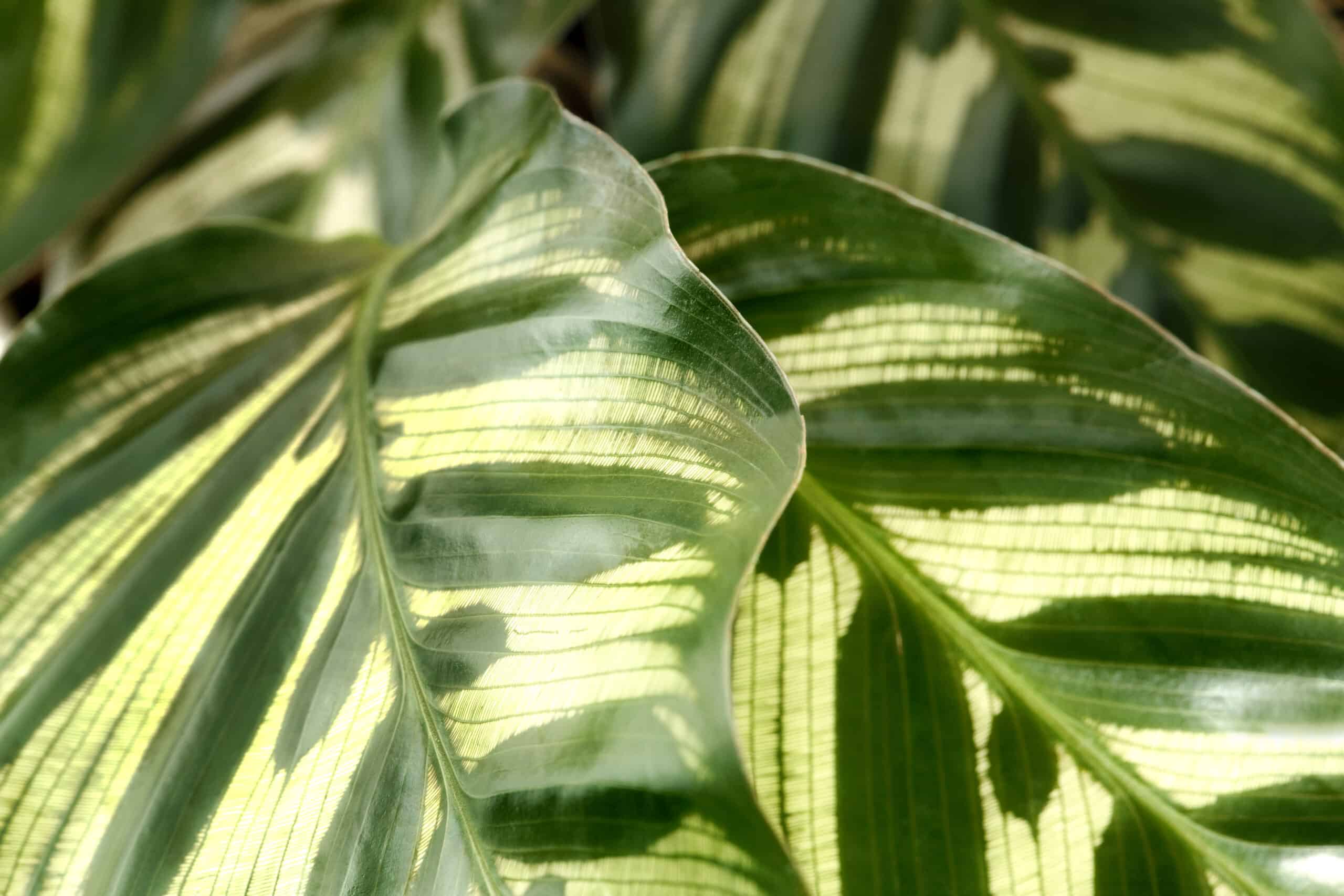
Calathea Peacock is not a cold-hardy plant so it is important to consider where you set the plant in your home and garden. It should be kept away from drafts or dry air that can cause significant damage. If it is kept indoors during the winter, be cognizant of the fluctuation of indoor air temperatures. All Calathea plant varieties can get shocked from being in a heated room all day and then left in a room that is cold at night.
How to Plant Calathea Peacock
Typically, these plants will need a new pot and soil every two to three years. Look for the following signs to know when a Calathea plant should be repotted:
- Slowed growth
- It requires more than two watering sessions a week
- Its roots are growing out of its container’s drainage holes
- Its foliage looks too heavy for its current container
To reduce the chance of shock, the repotting process should only be done in the spring or summer. This process will benefit the plant by providing it with fresh soil and more room for its root system to grow. The steps for repotting a Calathea Peacock are:
- Choose a plant container that is 2 inches larger in diameter than its current container
- Fill the plant container potting soil
- Create a hole in the soil for the plant to set inside
- Carefully remove the plant from its current container
- Gently dust off any excess soil from its roots
- Using a sterile cutting utensil, cut off any rotten roots
- Set the plant into the hole in the new container
- Spread the soil around so that the plant is secure in its new container
- Water the plant
- Set it in a warm spot with plenty of sunlight
Calathea Peacock Potting & Soil
Calathea Peacock requires soil that has a pH level ranging from neutral to acidic. Use a Soil pH Meter to test soil pH levels to know which direction they should be adjusted. To create higher levels of soil acidity, add bone meal, hardwood ashes, or ground eggshells to it. For a more detailed look at how to adjust soil pH levels, read this article.
Since soil can help or harm plants so much, you must select the proper type for each plant variety. It is equally as important to select a plant container that suits the plant and its required soil. Fortunately, Calathea Peacock is an easy solution when it comes to selecting soil and a plant container.
Calathea Peacock requires soil that drains water well but can still retain some moisture. This is so it doesn’t sit in either dry or soggy soil. It is particular about its soil condition since too much water can cause root rot. This is why it is so important that it be planted in a container that has drainage holes.
These are both great options to use for any Calathea plant:
Calathea Peacock Water Requirements

This type of plant needs moist soil all the time. If the top two inches of its soil look and feels dry, it’s time to give it a drink. The best way to do this is with the soak and dry method. Here’s how this method works:
- Fill a large tub or container with water
- Set the plant in the water but make sure the water doesn’t overflow the top of the plant’s container
- Allow the plant to soak in the water for 15 minutes (the water should be filling into the drainage holes of the plant’s container and soaking the soil)
- Remove the plant from the water and allow the excess water time to drain back out through the drainage holes of the plant’s container
Try a handy plant watering app to ensure that your plant has been properly watered. These can also be used to set reminders to water the plant and get answers to common plant care questions. Experiment with one today and see if your garden flourishes because of it.
Calathea Peacock Light Requirements
Try a light meter or a light meter app to ensure that all your indoor plants are receiving adequate amounts of sunlight. These technologies should make plant set-up a breeze.
When it comes to selecting a spot for you Calathea Peacock, choose a place that receives plenty of bright, but filtered or indirect sunlight. Direct sunlight will cause the leaves to dry out.
Best Calathea Peacock Fertilizer
Just like most Calathea varieties, this plant does not need a lot of fertilizer. It can, however, benefit from a half-strength dose of balanced liquid fertilizer once a month during spring and summer. It will not need any feedings during the winter months. Smiling Worm is an excellent choice of fertilizer for all varieties of Calathea plants.
Best Calathea Peacock Companion Plantings
As a tropical plant, Calathea Peacock loves the extra humidity it can get from clustering several other tropical plants next to it. If you really want to provide excellent care for your plants, get several of them. The following three plants are just a sampling of the many wonderful tropical plants that would make an ideal companion planting for a Calathea Peacock.
Marble Queen Pothos
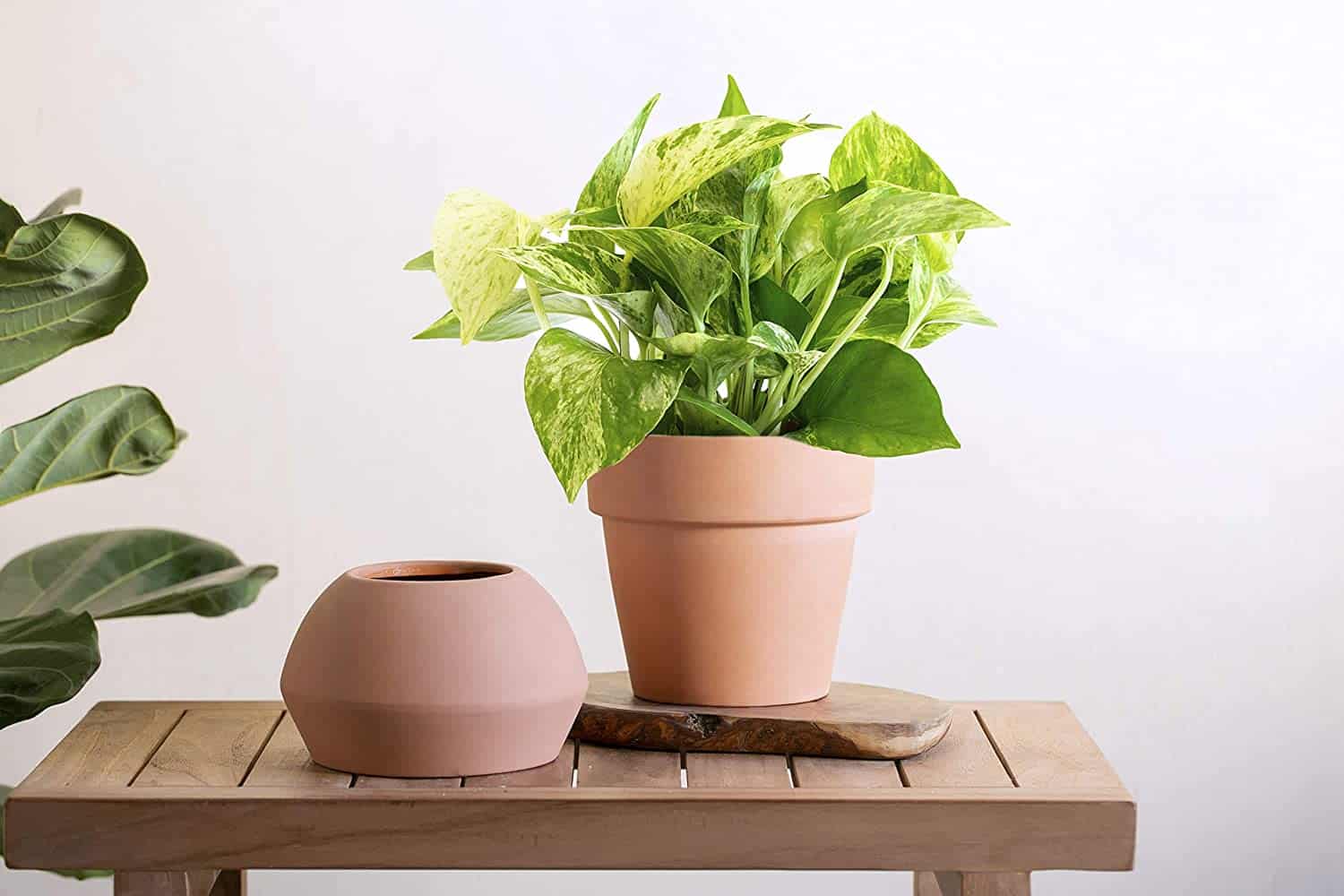
This tropical plant from French Polynesia is so simple to care for and so beautiful. It will be a great friend to your Calathea Peacock plant without bringing any extra fussiness into your home.
Pros
- Marble Queen Pothos is very easy to care for
- Marble Queen Pothos is very forgiving if neglected for a time
- Marble Queen Pothos has air purifying qualities
- Marble Queen Pothos can grow hydroponically
Cons
- Marble Queen Pothos is susceptible to infestations of aphids, mealybugs, and thrips
- Marble Queen Pothos is susceptible to root rot
- Marble Queen Pothos is toxic
Calathea Orbifolia
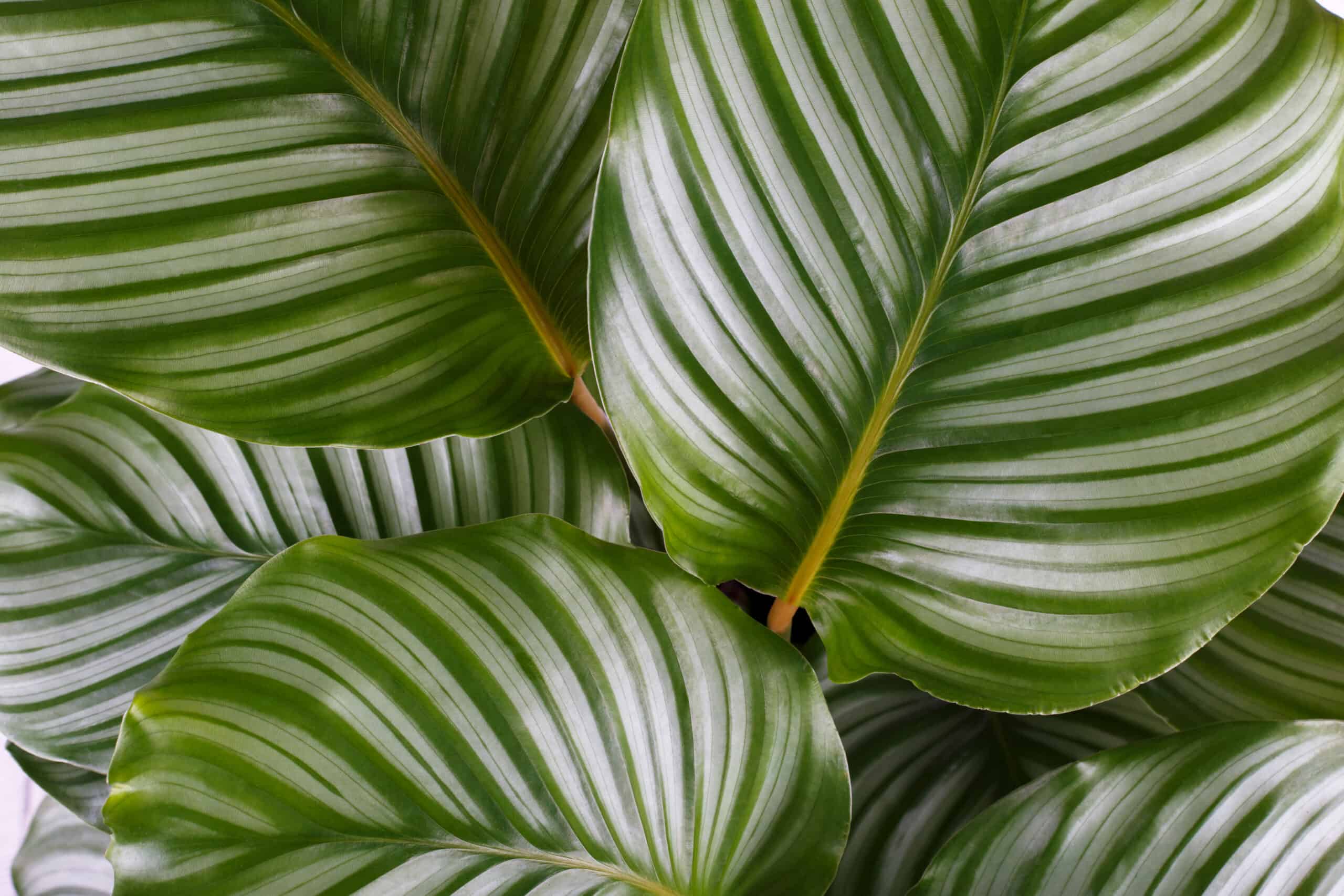
Why not try two Calathea varieties next to one another? They will complement one another in decorative qualities and require much the same in care.
Pros
- Calathea Orbifolia is a beautiful tropical plant
- Calathea Orbifolia has care requirements that are similar to those of Calathea Peacock
- Calathea Orbifolia is not toxic
Cons
- Calathea Orbifolia is susceptible to infestations of aphids, mealybugs, scale insects, and fungus gnats
Pearls and Jade Pothos
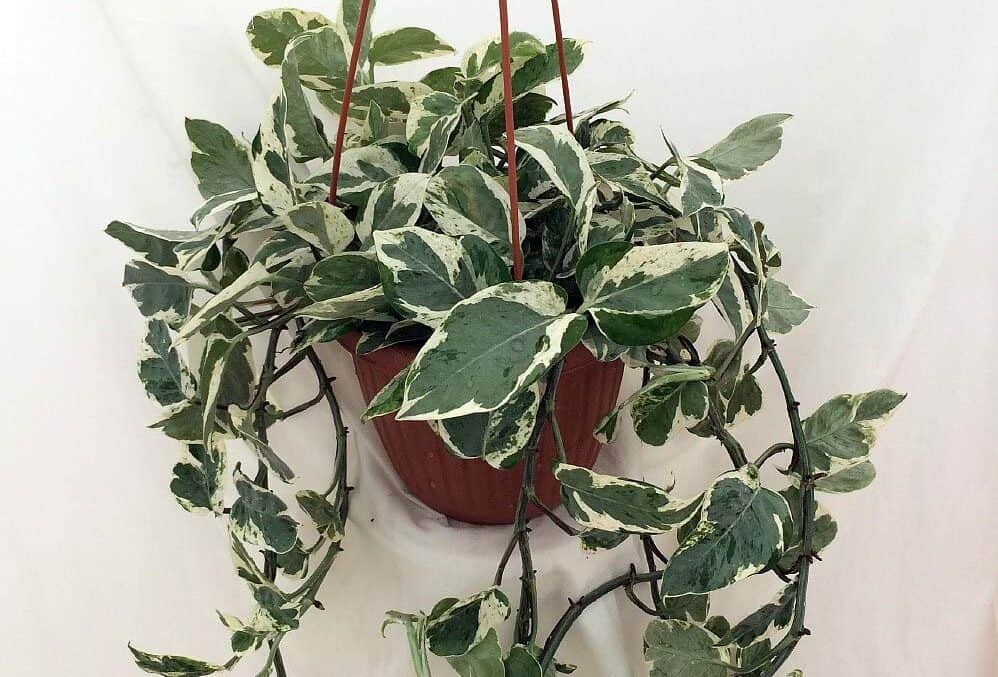
If ever there was an unfussy plant, this is it. As a Pothos variety, you can be guaranteed that this is a hardy, beautiful, and easygoing plant. Why not try a few of these alongside your Calathea Peacock and discover how they can complement one another?
Pros
- Pearls and Jade Pothos grows leaves that are variegated in white and green
- Pearls and Jade Pothos grows in a vining structure
- Pearls and Jade Pothos is easy to propagate
- Pearls and Jade Pothos can grow hydroponically
Cons
- Pearls and Jade Pothos are susceptible to infestations of aphids, mealybugs, scales, spider mites, and thrips
Calathea Peacock Diseases and Common Problems
When caring for a plant it is best to treat them quickly when they show signs of an infestation or a disease. This will give them a chance to recover and it may prevent other, nearby plants from being infected as well.
When caring for one of these plants, look for these common issues:
- Aphids
- Leaf Spot
- Scale
- Spider Mites
- Yellowed Leaves
Calathea Peacock Treatments and Maintenance
Prevent plant diseases and infestations by:
- Properly watering the plant
- Feeding the plant appropriate doses at the appropriate time of year
- Providing adequate sunlight
- Regularly inspecting the plant for pests and diseases
- Cleaning the plant regularly
Prevention is the best way to deal with diseases and pest infestations. If, however, your Calathea Peacock plant shows signs of an infestation or a disease, follow these steps to treat it.
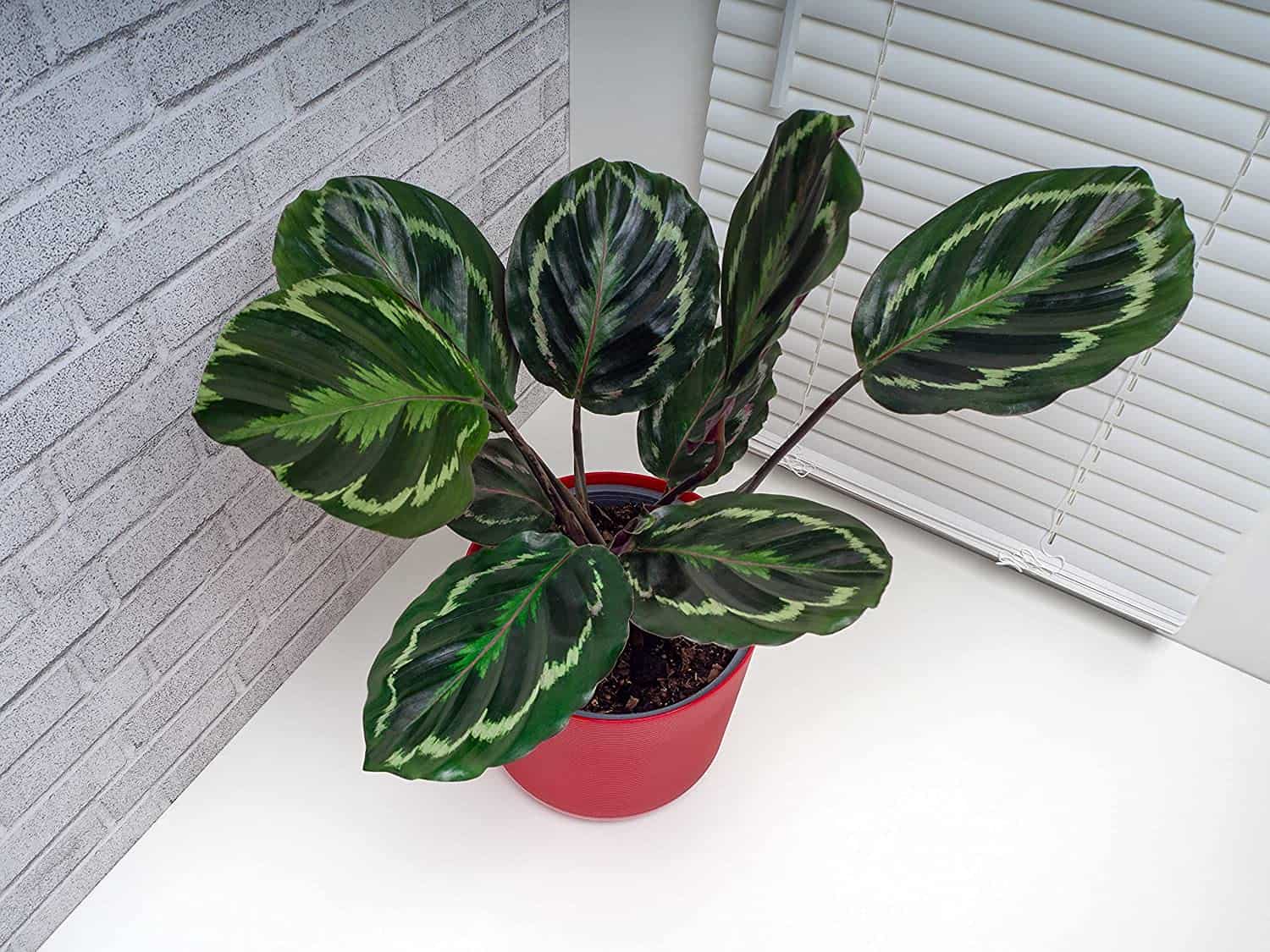
Aphids
This type of infestation looks likes tiny insects that are shaped like teardrops. To deal with an infestation of aphids, follow these steps:
- Spray the plant with a mixture of neem oil and soapy water
- Wipe down the leaves of the plant
- Apply neem oil to the leaves to prevent another infestation
Leaf Spot
This is a sign of a plant that needs more water.
Scale Insects
Evidence of this problem is round lumps on the plant’s leaves and stems. These lumps are usually small, round, and brown in color. To deal with an infestation of scale bugs, follow these steps:
- Spray them off with a hose
- Wipe the remainder off with neem oil and a cloth
- Prevent them from returning by coating the leaves with neem oil regularly
Spider Mites
Evidence of a spider mite infestation will show up as webbing on the leaves and stems. To treat this type of infestation, follow these steps:
- Fill a spray bottle with a quart of warm water, 1 tsp. of dish soap, and 2 tsps. Of neem oil
- Spray and wipe the leaves and stems of the plant clean
- Repeat as necessary
Yellowed Leaves
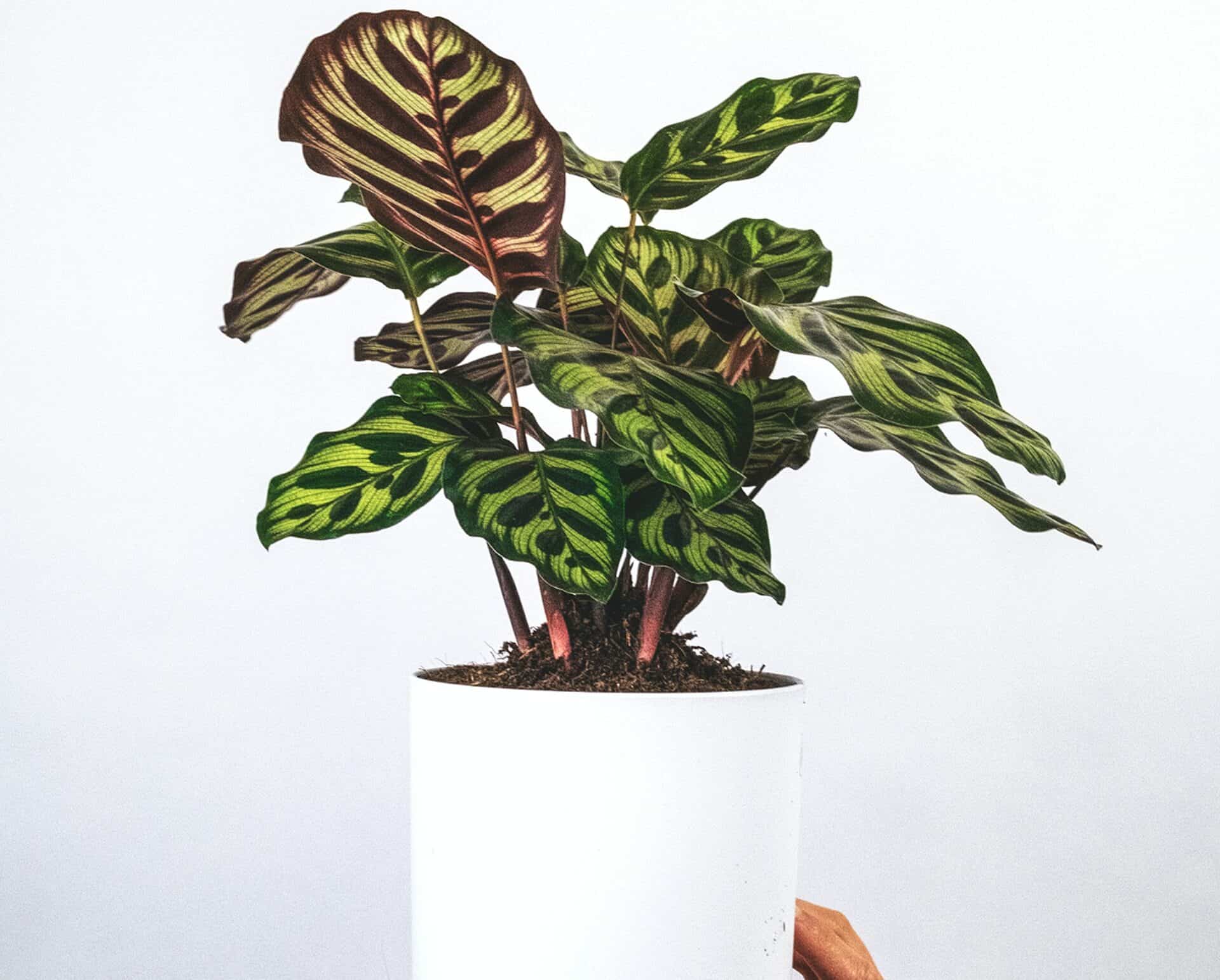
This is a sign that the plant has been overwatered. If its water regimen is adjusted it should recover.
Where to Buy Calathea Peacock Seeds Online
As is the case with most Calathea varieties, the seeds of this plant can be difficult to locate, but these shops are great places to begin searching for them.
Where to Buy Mature Calathea Peacock Online
Shopping on Etsy is the best way to look for a Calathea Peacock plant. It is a one-stop shop that makes it a worry-free and hassle-free process.
FAQs
Question: Is Calathea Peacock Toxic?
Answer: No, this is not a toxic plant.
Question: Which USDA Hardiness Zones are Best for Planting a Calathea Peacock Outdoors?
Answer: Remember, these plants are not cold-hardy; therefore, they should only be planted in a ground plot if you live in zones 10a or 11. If you do not live in these zones, you can still grow a Calathea Peacock, but you will have to keep it in a transportable plant container so you can bring it indoors during the winter.
Question: Is Calathea Peacock a Prayer Plant?
Answer: Yes, it is a type of prayer plant. This means that it will open its leaves in the morning and close them in the evening resembling hands at prayer.
In Conclusion
Calathea Peacock is a beautiful plant with a few fussy requirements, but the rumor that it is extremely difficult is not factual. If you’re up for a little challenge and a huge reward for your efforts, then get one of these for your home or garden.
Research Citations

